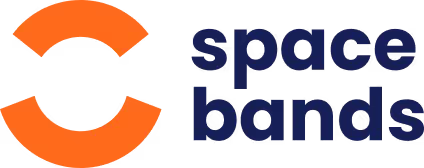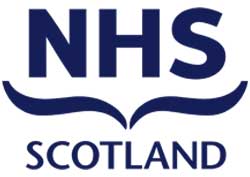OUR CUSTOMERS
NOISE MONITORING
Noise Monitoring Wearables for Safer, Compliant Worksites
Track harmful noise exposure in real time with spacebands. Give workers clear alerts when sound levels are unsafe, prove you are managing risk, and cut the long term costs of hearing damage, incident claims and lost productivity.


ARE YOU LEGALLY COMPLIANT?
Avoid legal liabilities, compensation claims, and higher insurance costs
Constant exposure to loud noise does more than damage hearing. It slows reaction times, makes communication harder and increases the risk of mistakes on site. Over time this hits productivity, quality and your bottom line.
Workers who are regularly exposed to excessive noise are also more likely to suffer fatigue, stress and mental strain, which can drive up absence and staff turnover.
Regulators expect employers to assess, control and monitor noise exposure. If a worker develops hearing loss and you cannot show that you managed the risk, you face enforcement action, compensation claims and rising insurance premiums.
one wearable protects staff from multiple hazards
PRODUCT BENEFITS
Monitor and record high noise exposure across every shift
Noise related hearing loss is permanent but it is preventable if you act early.
Excessive noise is not just an inconvenience. It is a long term threat to your team’s hearing and to your organisation’s ability to operate safely. Many workers do not realise that damage is being done until it is too late.
spacebands wearables give workers instant alerts when noise levels are too high and quietly log exposure in the background. By reducing the risk of hearing loss, employers can avoid costly claims, medical expenses, lost time and legal fees, while building a stronger safety culture.

REQUIRED TECHNOLOGY
Decibel Monitoring
To use spacebands decibel monitoring, you only need the devices below. The wearable does the listening, alerts the worker in real time and sends exposure data to your dashboard for review.
Technology
Analytics Dashboard
Noise alerts and exposure events are stored in the dashboard so you can review trends, identify hotspots and prove that controls are working.
Learn more...Technology
Wearables
Wearables alert users when noise levels exceed safe thresholds and quietly log exposure throughout the shift.
Learn more...Customisable Settings:
spacebands wearables trigger when they are exposed to decibel levels above the threshold set in the app or dashboard, from 60 to 120 dB.
Each exposure event is recorded with the peak level and how long it lasted. This data flows to the analytics dashboard so safety teams can spot patterns, prioritise controls and prove that noise risks are being managed.

Decibel Level:
Configurable from 60 - 120dB

Alert Duration:
Length of time in seconds alert runs

Alert Type:
Vibrate/Light/Beep
Snooze Duration:
Length of time alert can be snoozed

STATISTICS
Millions of workers live with hearing loss caused by workplace noise
The World Health Organization estimates that around 16 percent of adults worldwide have some degree of hearing loss and that a significant share of this is linked to work. The International Labour Organization has estimated that about 25 million people have experienced occupational hearing loss due to noise at work.
In Europe, hearing loss is one of the most common recognised occupational diseases, with millions of workers affected across noisy sectors such as construction, manufacturing, logistics and transport.
By monitoring noise in real time and keeping a clear record of exposure, employers can move from reacting to hearing loss claims to preventing them.
CUSTOMER FEEDBACK
Testimonials
spacebands are helping Health & Safety managers around the world reduce accidents, injuries and legal claims

Nick S
Senior H&S Manager
spacebands have transformed the way we control exposure to vibration. In just a year of use we have reduced exposure by close to 80%. And our production has become far more engaged in proactive safety.
I’d recommend spacebands to any company that takes safety seriously.

Robert M
Health & Safety Manager
Since introducing spacebands, we’ve seen a huge improvement in how we manage hand–arm vibration exposure.
Our monitoring is now instant and accurate, and we’ve significantly reduced the risk of overexposure. The team is also more aware of safe working limits, which has boosted our overall safety culture.

Chris P
Plant Manager
We had previously used a different HAVs wearable, but they were sitting on a shelf gathering dust because our team didn't have the time for tool tagging.
With spacebands, they just have to be wearing the wearable and it records daily exposure.

David N
Site Manager
spacebands gave us the ability to measure various levels of exposure, various tools and various tasks without having to recalibrate or recalculate; or most importantly having a negative effect on our production.
We looked at a few other options but no others that we saw came with that level of flexibility.
CONTACT US
Get in touch with us
Investing in spacebands is a great way to keep your workforce safe, whilst saving your company money.
The cost of just one non-fatal workplace accident is £15,700 - this doesn't include regulatory fines, increased insurance premiums or reputational damage.
Want to see how our wearables and analytics help you control hand arm vibration (HAVS), workplace noise, vehicle and machinery proximity, PPE compliance and unauthorised access? Get in touch with us.
FAQ
Frequently Asked Questions
spacebands help Health and Safety managers reduce accidents, injuries and legal claims by turning real time exposure data into practical action.
What are my legal responsibilities regarding noise levels in the workplace as an employer?
Most countries have specific regulations that require employers to assess noise levels, control exposure and provide hearing protection and information where risks remain. You should always check the exact standards and exposure limits that apply in your region.
spacebands devices can help you meet these duties by prompting workers to protect their hearing when noise is too high and by giving you an evidence base that shows how exposure is being managed over time.
Which industries are most affected by noise induced hearing loss (NIHL)?
Noise induced hearing loss is common in sectors where heavy machinery, power tools or engines are used for long periods. This includes construction, manufacturing, logistics and warehousing, mining, transport, shipping and many areas of heavy industry.
Entertainment, live events and music related roles are also at higher risk, along with some military and emergency services roles. Any job where workers have to raise their voice to be heard at arm’s length is a signal that noise risks should be assessed.
How many workers are exposed to excessive noise levels at work each year?
Global estimates suggest that hundreds of millions of workers are regularly exposed to noise that could damage their hearing over time. In some countries, tens of millions of workers are exposed to hazardous noise levels every year.
spacebands do not aim to measure the global scale of the problem. Instead, they help you understand the risk on your own sites by logging when and where workers are exposed to high noise so you can target controls where they will have the biggest impact.
What are the symptoms of Noise Induced Hearing Loss (NIHL)?
Common symptoms include difficulty following conversations, especially in noisy environments, a constant or occasional ringing or buzzing in the ears, sounds that seem muffled or distorted and increasing sensitivity to loud noise.
Symptoms often develop slowly and may go unnoticed for years, which is why it is vital to control exposure and monitor noise rather than waiting for workers to report problems.
What kind of jobs, tools and equipment commonly cause hearing loss?
Jobs that involve regular use of heavy plant, power tools or loud machinery carry the highest risk. This includes roles in construction, metal fabrication, woodworking, manufacturing, quarrying, mining, rail and road maintenance and many logistics and port operations.
Typical noisy tools and equipment include grinders, impact wrenches, breakers, drills, saws, compressors, generators, large engines, firearms and amplified music systems. If tools are loud enough that workers need to shout to be heard at close range, hearing protection and noise monitoring should be considered.
At what decibel level does sound become dangerous for hearing?
As a simple guide, long term exposure to noise above about 85 dB can start to damage hearing, and the higher the level, the shorter the safe exposure time. Short, very loud bursts can also cause instant damage.
spacebands devices can be configured to trigger alerts at decibel levels between 60 and 120 dB, so you can align thresholds with your local regulations and internal standards. The devices log exposure events so you can check that controls and hearing protection are doing their job.























